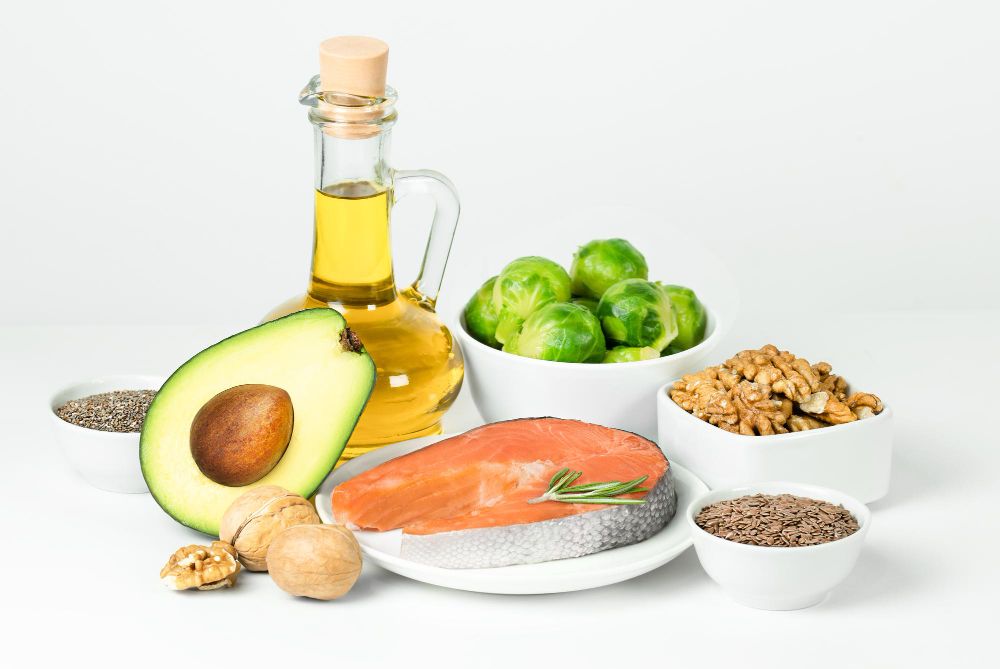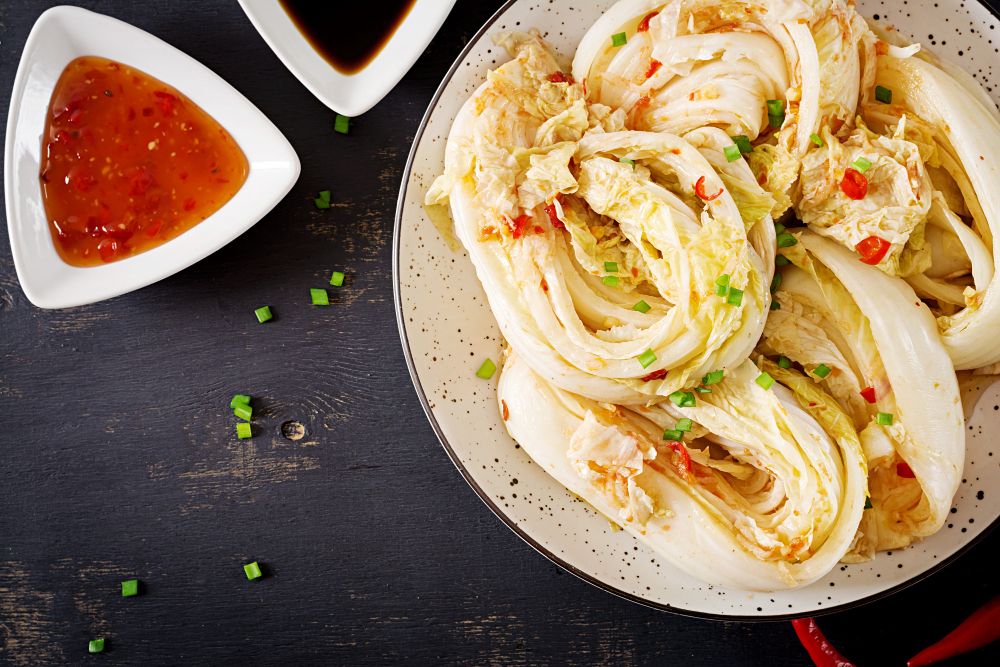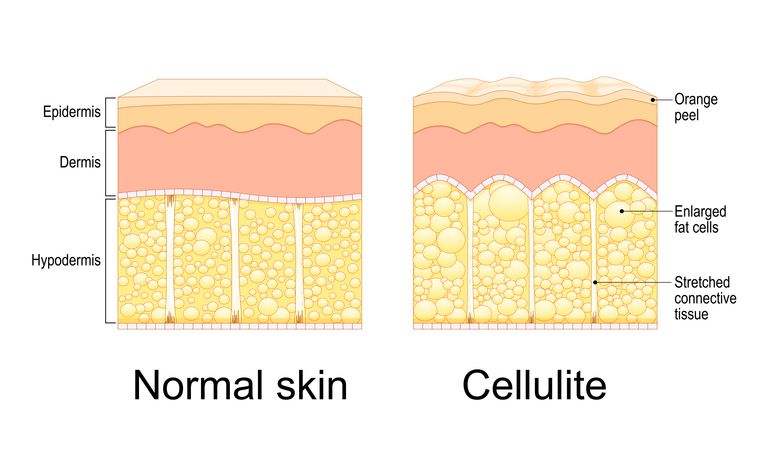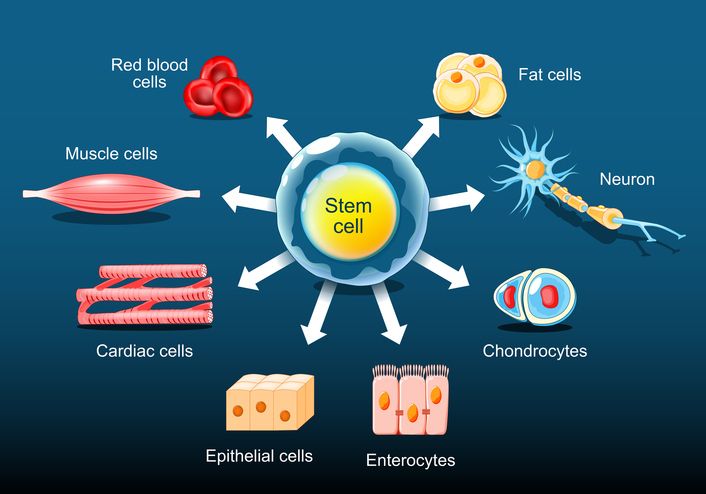
Author: Natalie Ng|Updated: 28 May 2025
A high-fiber diet for weight loss can help you feel satisfied for longer, manage blood sugar, and support a healthy gut. By choosing fiber-rich foods like whole grains, legumes, fruits, and vegetables, you can promote weight loss, protect heart health, and improve your overall wellbeing. This 10-day meal plan makes it simple to get 25-35 grams of fiber daily without adding too many calories. Swapping refined carbs for whole grains, like quinoa instead of white rice helps you eat nutrient-dense meals that support your health. Remember to increase your fiber slowly and drink enough water to help your digestive system adjust. A fiber-rich diet can reduce inflammation, nourish your gut microbiome, and make it easier to manage your weight in a healthy way. Keep reading to discover how small changes in your meals can have a big impact on your health and weight loss journey.

Importance of Fiber in Weight Loss

Fiber helps manage hunger and food intake
A high-fiber diet for weight loss can help control hunger by keeping you full for longer. Foods rich in fiber, like whole grains, legumes, and fruits, expand in your stomach and slow down digestion. This helps reduce food intake without feeling deprived, which can support healthy weight management.
Fiber slows digestion and supports blood sugar control
Fiber-rich foods absorb water as they pass through your digestive system. This process helps stabilize blood sugar and prevents sudden spikes and crashes that can lead to unhealthy snacking. By keeping your blood sugar balanced, fiber can help you avoid energy dips and promote steady weight loss.
Fiber can help your body get rid of calories
Some types of fiber bind to calories from food and help your body eliminate them before they can be absorbed. This effect may seem small, but over time it can contribute to healthy weight loss without relying on drastic calorie restrictions or crash diets.
Fiber supports long-term weight management
Adding fiber to your diet regularly can help you lose weight and keep it off. Fiber helps promote satiety, regulate digestion, and maintain a healthy gut microbiome. These benefits make fiber a smart choice for anyone looking to promote weight loss, stay healthy, and reduce the risk of conditions like heart disease and metabolic syndrome.

Essential High-Fiber Foods to Stock Your Kitchen
Fresh fruits and vegetables for fiber
Adding fiber-rich fruits and vegetables to your kitchen is one of the best ways to promote weight loss. These foods are packed with dietary fiber and help manage blood sugar, support your digestive system, and promote weight management.
Leafy greens like kale and spinach contain 3-4 grams of fiber per cup. Broccoli and brussels sprouts provide about 5 grams per serving. Fruits like pears (6 grams per medium fruit) and raspberries (8 grams per cup) are excellent sources of fiber and add variety to your meals. These fresh options not only help you lose weight, but they also support overall health and reduce the risk of heart disease.
Proper storage keeps your produce fresh and ready for meals. Wrap leafy greens in a damp paper towel, store root vegetables in a cool, dark place, and keep ripe fruits in the crisper drawer.
Whole grains for steady energy and fiber
Whole grains are a staple in a high fiber diet for weight loss. They help you feel full, support digestion, and provide lasting energy. Stock your pantry with nutrient-dense options like quinoa, brown rice, rolled oats, and whole wheat pasta.
A cup of cooked quinoa offers 5 grams of fiber, while brown rice provides about 3.5 grams per cup. Whole wheat pasta brings 6 grams per cup, and steel-cut oats deliver 8 grams per cup. Swapping refined grains for these whole grain choices supports healthy weight management and helps reduce the risk of chronic conditions like metabolic syndrome and cardiovascular disease.
Legumes, seeds, and other pantry essentials
Legumes like kidney beans, black beans, and split peas are excellent sources of fiber. Kidney beans provide 6-7 grams per half-cup, while black beans offer about 7.5 grams per half-cup. These fiber-rich foods also add plant-based protein to your meals, supporting a balanced diet.
Chia seeds are another fiber powerhouse, with 10 grams of fiber in just 2 tablespoons. Adding them to oatmeal, smoothies, or yogurt boosts both fiber and healthy fats in your meals. Whole grain crackers, prebiotic fiber sources, and low fat cottage cheese can also support your fiber goals while offering a variety of textures and flavors.
Book Now to Experience
S6 Body Sculpting Treatment
1 Minute Self-Registration
Date should not be before minimal date

Meal Plan and Shopping List for a High-Fiber Diet
Building a balanced daily meal plan
A well-planned high fiber diet for weight loss helps you stay full, manage blood sugar, and promote weight management. Aim for 25-35 grams of fiber a day by spreading your fiber intake across breakfast, lunch, dinner, and snacks. This keeps digestion steady and supports a healthy gut.
Here’s a sample breakdown:
• Breakfast: 8-10 grams of fiber from oatmeal, berries, or chia seeds
• Lunch: 10-12 grams of fiber from lentil soup, whole grain wraps, or salads
• Dinner: 10-12 grams of fiber from quinoa, roasted vegetables, or legumes
• Snacks: 5-6 grams of fiber from an apple, nuts, or whole grain crackers
This structure helps you avoid large swings in food intake and keeps your body satisfied throughout the day.
How to create a smart shopping list
Planning your meals and shopping list saves time and makes it easier to meet your daily fiber needs. Start with fresh produce like leafy greens, fruits, and cruciferous vegetables. Then, move to bulk items like whole grains (quinoa, brown rice, rolled oats) and legumes (kidney beans, black beans, split peas). Don’t forget seeds like chia for an extra fiber boost.
Organize your shopping list by store section—produce, grains, canned goods, dairy, and snacks—to avoid unnecessary trips through the aisles. This helps you stick to your fiber goals and makes grocery shopping efficient.
Tips for staying on track
Meal prepping helps you stay on course. Wash, chop, and store vegetables in containers so you can quickly add them to meals. Portion snacks like nuts and dried fruit into small containers for easy grab-and-go options. Having a plan and keeping your kitchen stocked with fiber-rich foods helps you build healthy habits that support long-term weight loss.

Tips for Following a High-Fiber Meal Plan
Start slow to avoid digestive issues
Increasing fiber too quickly can cause bloating, intestinal gas, or discomfort. To help your digestive system adjust, add more fiber slowly. Start by adding about 5 grams of fiber each week. This could be as simple as adding a small portion of lentils to your salad or including a cup of green peas in your dinner. This gradual increase helps reduce the risk of digestive issues like bloating or irritable bowel syndrome.
Drink plenty of water
Drinking enough water is just as important as eating enough fiber. Aim for 8-10 glasses of water a day. Fiber needs water to move through the digestive system properly. Without enough fluids, you may experience constipation or discomfort. Keeping a water bottle nearby makes it easier to stay on track.
Prep meals and snacks in advance
Meal prep saves time and helps you make better choices. Chop and store vegetables ahead of time. Cook grains like brown rice or quinoa in bulk and portion them into containers for quick meals. Having fiber-rich snacks like apples, nuts, or whole grain crackers ready can help you stick to your meal plan even on busy days.
Track your fiber intake and progress
Writing down what you eat or using a food tracking app helps you stay aware of your fiber intake. Noting how you feel as you add more fiber—like changes in energy, digestion, or body weight—can help you stay motivated and make adjustments as needed.
Celebrate small changes
Healthy habits take time to build. Celebrate simple swaps like choosing whole grain bread instead of white, or adding chia seeds to your breakfast. These changes support weight loss, improve overall health, and help you stay consistent with your fiber intake.

Common Challenges with a High-Fiber Diet and How to Manage Them

Digestive discomfort
When you start eating more fiber, you may feel bloated or gassy. This happens because your gut bacteria are adjusting to the extra fiber. To manage this, increase fiber intake slowly—about 5 grams more each week—and give your body time to adapt. Chewing food thoroughly and eating smaller portions can also help ease digestive discomfort.
Meal prep struggles
Planning and preparing meals can feel overwhelming at first. To make it easier, set aside time each week—like Sunday afternoon—for meal prep. Chop vegetables, cook whole grains, and portion out snacks like nuts, black beans, and dried fruit. Keep a list of fiber-rich meals you enjoy, so you have go-to ideas when you’re short on time.
Staying on track when eating out
Eating out can make it harder to stick to a high fiber diet. When dining at restaurants, ask for whole grain bread, brown rice, or extra vegetables instead of refined grains or fries. Choosing dishes with legumes like lentils or kidney beans can also help meet your fiber goals.
Forgetting water intake
Without enough water, a high fiber diet can lead to constipation or bloating. Aim for 8-10 glasses of water daily. Keeping a water bottle nearby is a simple way to remind yourself to drink throughout the day.
Feeling overwhelmed
It’s easy to feel like you need to follow the plan perfectly, but you don’t have to. Focus on making small changes—like adding a cup of brussels sprouts to dinner or swapping white rice for quinoa. These simple habits add up over time and help promote weight loss without stress.
Book Now to Experience
S6 Body Sculpting Treatment
1 Minute Self-Registration
Date should not be before minimal date

High-Fiber Recipes to Help You Lose Weight
Simple high-fiber meals for every day
Eating more fiber doesn’t mean you have to spend hours in the kitchen. You can prepare simple, nutrient-dense meals that support weight loss and keep you full for longer. Here are a few easy options to get you started:
• Breakfast: Start your day with a fiber-packed oatmeal bowl. Combine 1 cup of steel-cut oats with 2 tablespoons of chia seeds and top with fresh berries. This meal gives you around 10 grams of fiber, plus healthy fats and antioxidants.
• Lunch: Try a whole grain wrap filled with hummus, shredded carrots, black beans, and leafy greens. This option offers a mix of fiber, lean protein, and healthy fats to keep you satisfied.
• Dinner: Make a quinoa Buddha bowl with roasted brussels sprouts, chickpeas, and a drizzle of olive oil. Quinoa adds 5 grams of fiber per cup, while chickpeas provide around 6 grams per half cup.
• Snacks: Keep fiber-rich options ready, like apple slices with almond butter or a handful of roasted chickpeas. These simple snacks are easy to grab and help you stay on track with your daily fiber goals.
Tips for building your own high-fiber meals
Focus on adding a variety of fiber-rich ingredients to each meal. Combine whole grains, legumes, fruits, and vegetables to create balanced plates. Use chia seeds or flaxseeds in smoothies or yogurt for extra fiber. Choose whole grain bread and pasta over refined versions. Add lentils or black beans to soups, salads, or grain bowls for a fiber boost. These small swaps help you meet your fiber needs without feeling restricted.

Quick Swaps to Add More Fiber to Your Diet
Simple substitutions for higher fiber meals
Adding more fiber to your diet doesn’t have to be complicated. Small changes in your meals can make a big difference. Here are some easy swaps to try:
• Swap white rice for quinoa or brown rice – Quinoa has 5 grams of fiber per cup, while brown rice offers about 3.5 grams.
• Choose whole grain bread over white bread – Whole grain varieties give you 3-4 grams of fiber per slice, compared to less than 1 gram in white bread.
• Replace regular pasta with whole wheat pasta or lentil pasta – Whole wheat pasta contains about 6 grams of fiber per cup, while lentil-based pasta has even more.
• Snack on roasted chickpeas instead of chips – Chickpeas provide 6 grams of fiber per half cup and add a satisfying crunch.
• Use chia seeds in smoothies or yogurt – Two tablespoons of chia seeds give you around 10 grams of fiber and a mild, nutty flavor.
• Mix in split peas or black beans – Both are high in fiber and easy to add to soups, salads, or grain bowls.
Make fiber a daily habit
By making these small swaps, you can gradually increase your daily fiber intake without overhauling your diet. Whether it’s swapping white rice for quinoa or adding a tablespoon of chia seeds to your breakfast, these simple steps can help promote weight loss, support your digestive system, and improve overall health.

Common Mistakes When Following a High-Fiber Diet for Weight Loss

Increasing fiber too quickly
Many people try to boost their fiber intake overnight, which can lead to digestive discomfort. Going from a low-fiber diet to a high-fiber plan too fast may cause bloating, gas, or constipation. To avoid this, increase fiber slowly, by about 5 grams per week, while staying hydrated. This gradual change gives your digestive system time to adjust.
Ignoring water intake
Fiber needs water to move through the digestive system. If you increase your fiber intake without drinking enough water, you may feel bloated or backed up. Aim for 8-10 glasses of water a day to support healthy digestion and weight loss efforts.
Relying on fiber supplements instead of whole foods
While fiber supplements can help, they shouldn’t replace fiber-rich foods like whole grains, fruits, vegetables, and legumes. Whole foods provide not only fiber but also vitamins, minerals, and other nutrients that support weight management and overall health. A high-fiber diet for weight loss works best when it’s built on real, nutrient-dense meals, not just powders and pills.
Skipping healthy fats and protein
Focusing only on fiber can lead to unbalanced meals. Pairing fiber with lean protein and healthy fats—like low fat cottage cheese, salmon, or nuts—helps keep you satisfied for longer and supports stable blood sugar levels. Meals that combine fiber with protein and fats are more filling and help reduce the urge to snack between meals.
Overestimating fiber in processed foods
Not all foods labeled “high-fiber” are healthy choices. Many processed foods, like certain granola bars or cereals, may contain added fiber but also include sugar, unhealthy fats, and artificial ingredients. Choose whole, unprocessed options like fruits, vegetables, beans, and whole grains whenever possible to help you lose weight and improve your overall health.
Book Now to Experience
S6 Body Sculpting Treatment
1 Minute Self-Registration
Date should not be before minimal date

How S6 Body Sculpting Treatment Can Boost Your Weight Loss Efforts
Combining a high-fiber diet with S6 Body Sculpting
A high-fiber diet for weight loss is a smart way to improve digestion, manage blood sugar, and promote weight management. But if you’re struggling with stubborn fat that won’t budge no matter how many fruits, vegetables, or whole grains you eat, the S6 Body Sculpting Treatment can help you get faster results.
This non-invasive body contouring treatment uses bio-laser and vacuum suction technology to target and reduce stubborn fat cells in specific areas. While a high-fiber diet helps regulate food intake, support gut health, and promote healthy weight loss, the S6 Body Sculpting Treatment works directly on problem areas where fat tends to stick, such as the belly, waist, thighs, and arms.
By combining a fiber-rich diet with S6 Body Sculpting, you can support overall weight management, improve digestion, and promote fat loss from difficult areas at the same time.
How the treatment works
The S6 Body Sculpting Treatment uses bio-laser technology to break down fat cells beneath the skin. These fat cells release fatty acids, which are then flushed out naturally by the body. Vacuum suction technology is applied to the treated areas, speeding up lymphatic drainage and helping your body get rid of the fatty acids more effectively. The treatment is designed to reduce fat in seven key areas: belly, waist, thighs, arms, calves, above the knees, and underneath the buttocks.
Advantages of the S6 Body Sculpting Treatment
• No downtime – The treatment is non-invasive, so there’s no need for recovery.
• Targeted fat loss – Helps reduce fat in specific areas that are hard to slim down with diet and exercise alone.
• Painless and safe – The bio-laser and vacuum suction techniques are gentle and do not cause skin damage.
• Supports your weight loss goals – When combined with a high-fiber diet for weight loss, the treatment can help you lose stubborn fat and achieve a more defined shape.
Book your S6 Body Sculpting session today
If you’re following a high-fiber diet but struggling with stubborn fat in certain areas, S6 Body Sculpting can help you take your results further. Combine a healthy diet with targeted fat reduction for a slimmer, more sculpted body. Book your consultation today to learn how S6 Body Sculpting can support your weight loss journey.Book Now to Experience
S6 Body Sculpting Treatment
1 Minute Self-Registration
Date should not be before minimal date
FAQ
1. Can a high fiber diet help reduce belly fat?
A high fiber diet can help reduce overall body fat, including belly fat. Fiber slows digestion, helps control blood sugar levels, and keeps you full, which can lead to a natural reduction in food intake and promote weight loss. Foods like whole grains, fruits, vegetables, and legumes are great sources of dietary fiber that support long-term weight management. While fiber can help reduce fat around the belly, combining it with regular exercise and body contouring treatments, like the S6 Body Sculpting Treatment, may lead to more noticeable changes in body shape.
2. What happens if I eat too much fiber?
Eating too much fiber too quickly can cause bloating, intestinal gas, and digestive discomfort. Gradually increasing your fiber intake while drinking enough water helps your body adjust. The recommended daily fiber intake is around 25-35 grams for adults. It’s important to spread your fiber intake across the day and pair it with adequate water intake to avoid issues like constipation or stomach pain. If you have a health condition such as irritable bowel syndrome or inflammatory bowel disease, consult a healthcare provider before making major changes to your fiber intake.
3. Can I take fiber supplements instead of eating fiber-rich foods?
Fiber supplements can help increase total fiber intake but should not replace natural, fiber-rich foods like fruits, vegetables, whole grains, and legumes. Whole foods provide a range of nutrients, including vitamins, minerals, and antioxidants, that support overall health and weight management. Supplements may be helpful for people who struggle to meet their daily fiber needs, but they do not offer the same benefits as a diet rich in whole, nutrient-dense foods.
4. What are the health benefits of combining a high fiber diet with body sculpting treatments?
Combining a high fiber diet with body contouring treatments, like the S6 Body Sculpting Treatment, can support both internal and external weight loss goals. While fiber helps manage appetite, regulate blood sugar, and reduce the risk of chronic inflammation and heart disease, body sculpting treatments target stubborn fat areas like the belly, thighs, and arms. This combination promotes fat loss from within through improved digestion and metabolism, while the treatment helps remove fat cells from specific areas for a more toned appearance.
5. Are there any high-fiber foods that can help with digestive health and weight management?
Yes, certain high-fiber foods are especially helpful for digestive health and weight management. Foods like chia seeds, black beans, lentils, split peas, green peas, and whole grain crackers are excellent choices. These fiber-rich options promote a healthy gut microbiome, support regular digestion, and help manage body weight. Including these foods in your daily meal plan, along with soluble fiber from fruits and vegetables, can support long-term health and help you stay full between meals.
Recommended Articles
COPYRIGHT© NEW BEAUTY MANAGEMENT LIMITED 2025. ALL RIGHT RESERVED.




